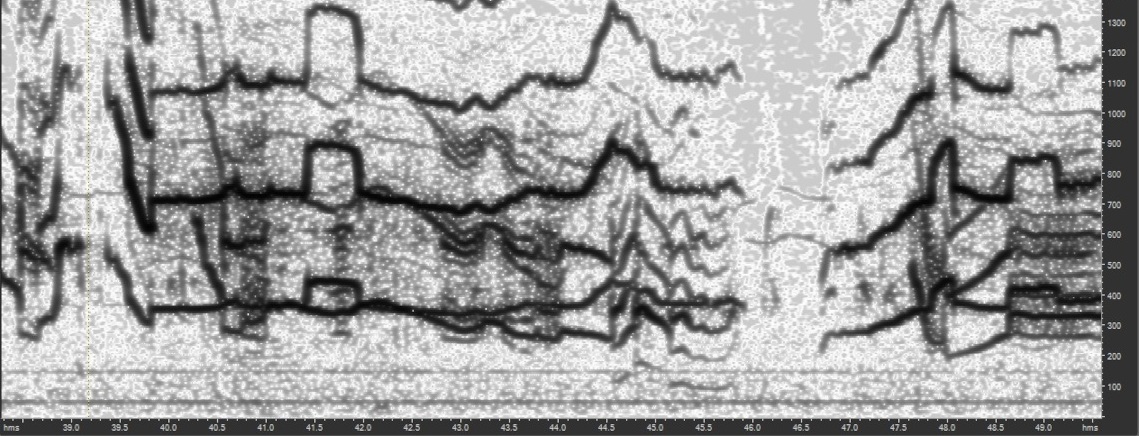Exploring variation within canid howl repertoires: demonstrating individual and sex differences

Abstract
Wolf howls are individually discriminable and have been shown to vary widely between populations, with different species producing different dialects of preferred pitch-contours. However, it is not known how these differences arose or how flexible wolves are in their vocal production within these dialects. We aim to explore how this variation is produced by exploring within-individual and within-sex repertoires of different species of gray wolfs as well as quantifying the use of howl-types across seasons. Wolf howls were recorded across populations in Spain, the USA, and the UK using elicited howling techniques. Individuals were identified and sex noted. We analysed the howls using a spectrographic analysis in Matlab. The resulting pitch contours were described using scalar variables, such as the mean of the fundamental frequency, and were also fed into dynamic-time-warping analysis to compare howl similarities. K-means cluster analysis and discriminant function analysis were used to classify the data. Our results suggest that differences between wolf howls are due to both morphological differences between the sexes and individuals, but also arise in response to different behavioural contexts. We suggest further research is warranted to elucidate how these differences in howl-contour develop, and whether vocal learning occurs.
